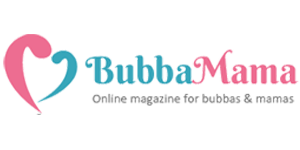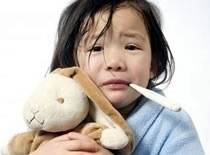Recently my twins were taking turns having a fever from a viral infection they caught from daddy. Taking their temperature, I was shocked to see their temperature at 39.5 degrees! The horrors! I panicked and called my hubby, who asked me to monitor their temperature and behavior. I was expecting him to rush them to our PD or hospital but he seem so calm! After putting down the phone and with my mind straying and imagining the bad things that might happen, I went online to find ways that I can lower the fever without medications, since I couldn’t even get half the recommended dose of paracetamol after much struggling, crying and grabbing. They were just master wigglers! They would manage to find the strength and ways to wiggle their way out of my clutches even when I tried to use every possible limb on my body to cram them down so that I can force feed the medication in.
I found my answers, but more importantly, I found information that will help me understand this fever issue so that I can manage it better. And I am proud to say that we have survived the fever episode without using any fever medications. I am going to share with you what I have learnt and how you can conquer the fever monster with ease.
Often, we panic when our young children has a fever. “Oh gosh it’s 38.5 degree! It is high fever! Better give medication!” Thoughts starts to run wild with old wives’ tale of fever nightmares; fever will “burn” the brain, lead to fits/seizures and all sorts of other unthinkables. The worrying becomes worse when your young children refuse to take the medication or spit it all out, and you are certain he/she needs to go to the doctors right away! But before we get into another panic frenzy the next time our precious gets a fever, let me share with you some information on fever, and busting some myths along the way.
Firstly, you must understand why our body develops a fever. Contrary to the myths, fever is not the body’s way of telling you something is wrong, but rather it is the body using the increased heat to fight the infection. The fever induced heat actually helps to kill off bacterial or viral infections as most of these bacteria thrives at 37 degree, so what you are seeing on the thermometer is not your body’s SOS message, but rather the “weapon” the body has prepared for the battle.
Secondly, for brain damage to occur, the body temperature would have to reach 42 degree. Of course we have heard of frightening tales of brain damaging fever from our folks more often than it is really happening, but in actual case is not as common as you think. Unless you bundle up your precious in many many layers of clothings and caused the temperature to spike.
Thirdly, many people have concerns that high fever might lead to seizures. Indirectly in a way, but how a high fever can cause a seizure is because the body temperature rises too quickly,and the brain is overloaded with information. A slow rising high fever does not necessarily increase the odds of having a seizure. Seizures looks frightening, but is mostly harmless if you know how to handle the child while he/she is having one. Place the child on floor and on their side of the body so that when they vomit during the seizure they will not choke on it. Remove anything from the children’s mouth so that it will not be hazardous. For more information you can read here and here.
Having said the above, it does not mean that when your child is having a fever you can just ignore it. You should try to lower the temperature ( there are some tips below), but you do not necessarily need to feed the child medication to lower it. There are many natural way of lowering the temperature without using medication. As long as your child is still playful, alert and behaving normally other than the fact he is running a temperature between (38-40.5 degree) you can just nurse the child at home. Lowering the temperature might make your child feel more comfortable, but there is no need to worry if it does not go back to normal temperature. Remember the fever is to help the body fight the bacteria. The fever will most likely stay for 3-4 days and will eventually subside after the 4th day so just let nature do its course.
Things that you should NOT DO:
1) Do NOT dress the child up in multi layer of clothes to ‘expel the heat’. Doing this might make the temperature rise quickly. Dress your child in normal clothing that are comfortable to allow the heat to escape but not underdressed because that might cause him to shiver, and will also make the temperature increase. The best is to dress up in what he would normally wear.
2) Do NOT use cold or ice pack, cold water bath to give the child a bath or sponging. This will make him shiver and will be counterproductive as the body will increase the heat to compensate for the rapid loss in temperature. Not to mention it is very uncomfortable for your child!
3) do NOT over feed your child medication. Overdose can hurt the liver. Always keep to the recommended dosage on the bottle. Less is best. Fever medication such as ibrufen or paracetamol is to reduce fever only and in no way does it help in eliminating any bacterial or viral infection your child might have! So there’s no need to feed fever medication around the clock. Therefore you should only use it when necessary.
Things to do to lower the fever without medication:
- Should give the child a lukewarm bath or sponging. When the water evaporates it will remove the heat, so there’s no need to use cold water.
- Give a ice popsicle or ice cream to cool the body from inside out.
- Use a small wet handkerchief to place on the forehead.
- Dress in normal clothing.
- stay in a cool airy rest area. Do not expose the child to cold air condition as it might be too cold. Just a fan and airy area will do.
when to call a doctor
- if your child is sleepy all the time, or not alert
- if he is turning blue or purple
- if she is having difficulties in breathing
- if she is less than 3 months old and is running a fever
- if she is between 3 – 5 months and temperature is more than 38.3
- if she is 6 months to 12 months and her temperature is more than 39



